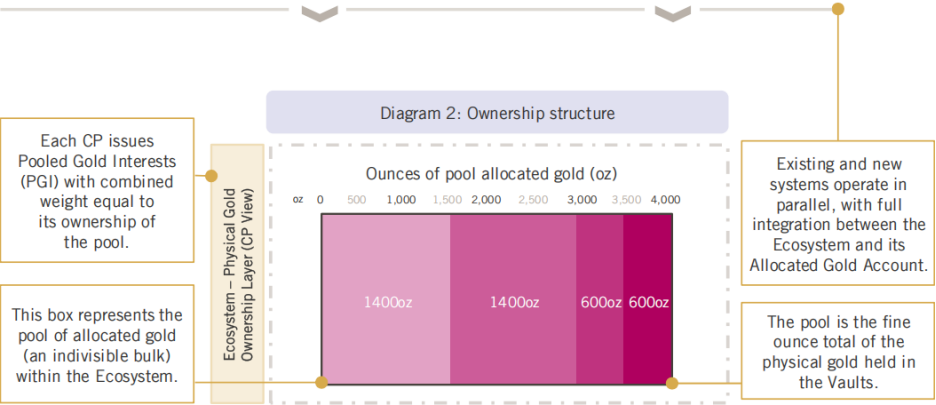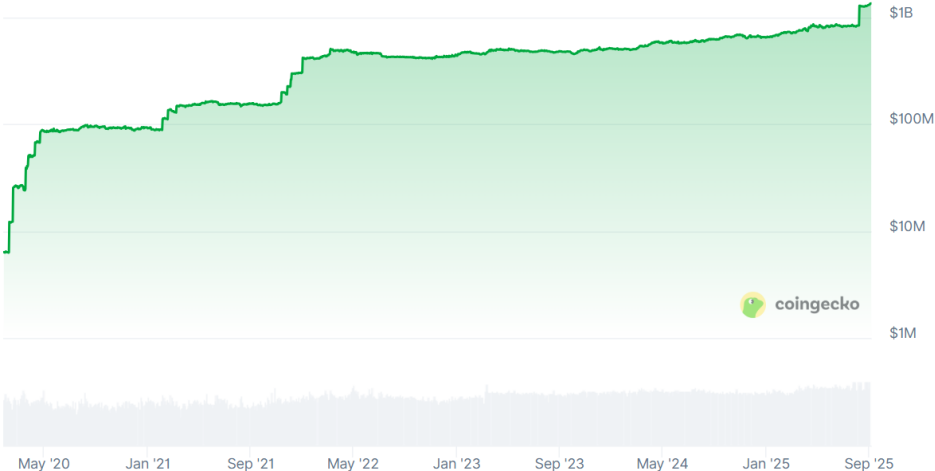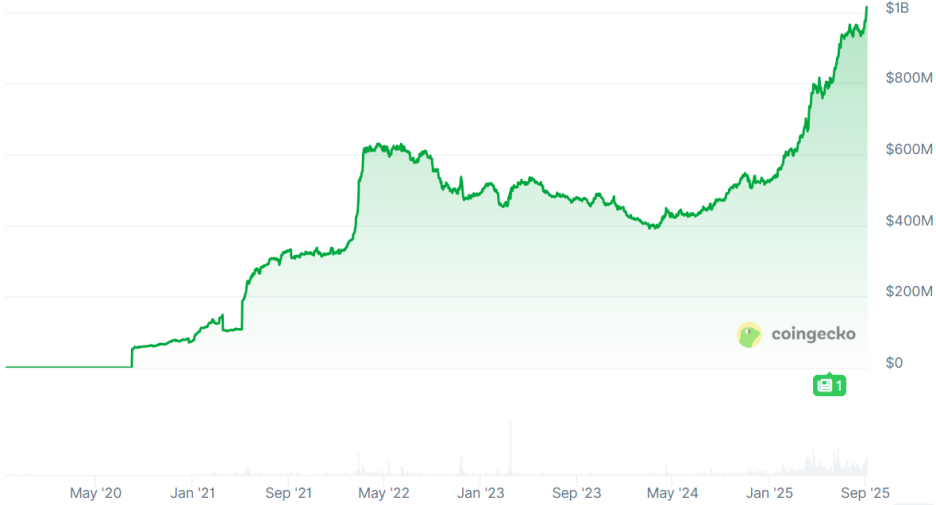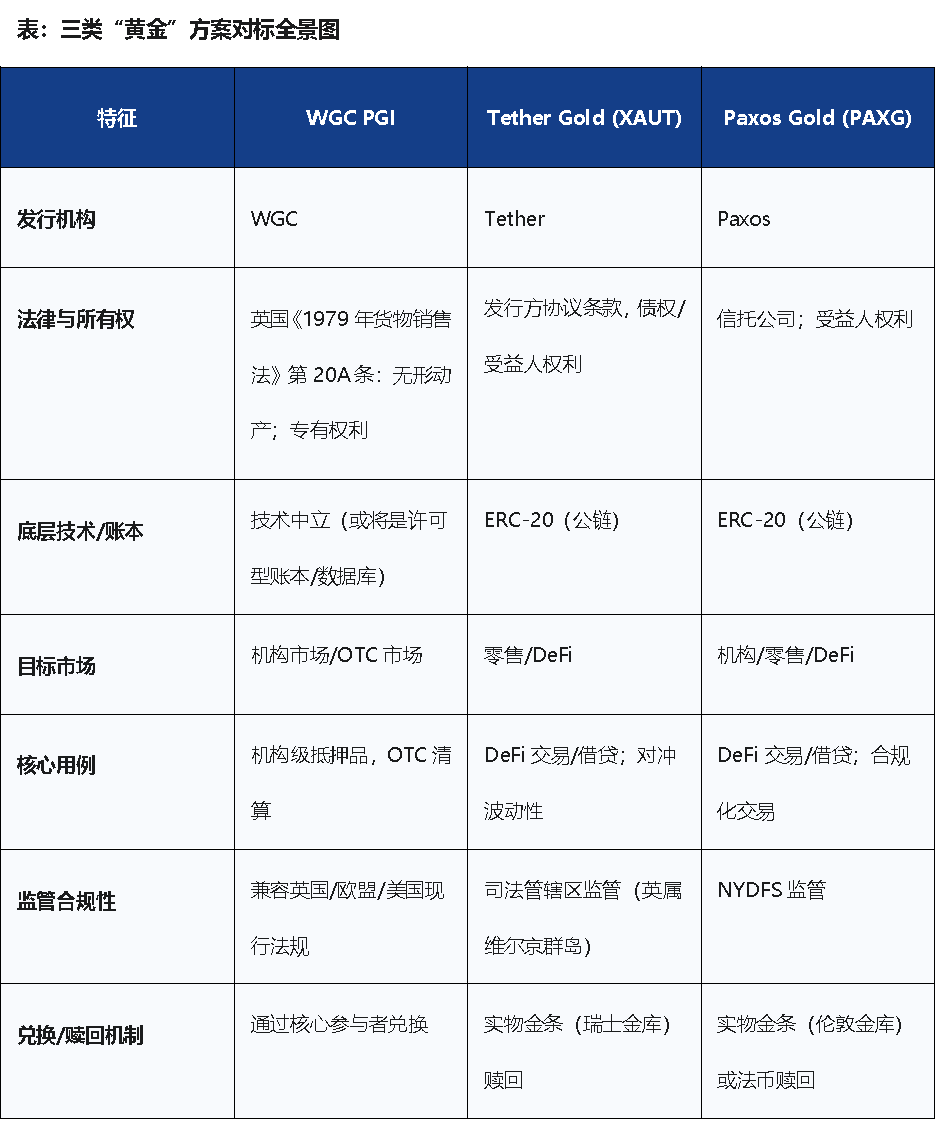Author: J.A.E, PANews
On September 3, 2025, Ray Dalio, founder of Bridgewater Associates, posted on the X platform that the U.S. dollar debt crisis is one of the factors driving the rise in gold and cryptocurrency prices. On the same day, international gold prices hit a historic high of $3,578.32 per ounce. Meanwhile, the tokenized gold market in the crypto industry has surpassed $2.6 billion, and Tether has recently been reported to be in talks to invest in gold mining.
As the gold market surges and positive news flows in, a wave of "digital transformation" has emerged within it. Recently, the World Gold Council (WGC) collaborated with top international law firm Linklaters to release a groundbreaking white paper, officially proposing a new definition for the "Wholesale Digital Gold" ecosystem and "Pooled Gold Interests" (PGI). The "digital upgrade" of the gold market is not merely a technical transformation but a strategic response from TradFi to the crypto market. Gold, as the oldest financial asset, is entering a digital new era that emphasizes efficiency and flexibility, unlocking new use cases within the TradFi system.
From Trading Restrictions to Collateral Challenges, WGC Offers a "Digital Solution" for the Gold Market
Currently, the London over-the-counter (OTC) gold market is primarily composed of two clearing models: allocated gold and unallocated gold, each with its own advantages and disadvantages, which constitute the "opportunity gap" pointed out in the white paper.
Allocated gold refers to specific gold bars with unique serial numbers, purity, and weight information stored in physical vaults. Its greatest advantage lies in clear ownership, as investors have direct ownership of the physical gold bars, effectively isolating and safeguarding against credit risk between banks. However, the "cost" of this model is its high complexity, the indivisibility of transactions (typically around 400 ounces), and the resulting liquidity constraints.
In contrast, unallocated gold represents an investor's claim to a specific quantity of gold held by a custodian. This model offers greater flexibility and liquidity, with transaction units as low as one-thousandth of an ounce and more efficient settlement processes. However, its disadvantage is significant counterparty risk. If the custodian goes bankrupt, the investor's claim to gold will be settled alongside other unsecured creditors, making it difficult to obtain judicial protection for the assets.
The white paper points out that both existing models have serious limitations when acting as financial collateral. Unallocated gold, due to its claim nature, typically cannot be considered qualified collateral under relevant UK and EU laws. Allocated gold, while legally feasible, incurs high costs and complexity due to the frequent need to transfer, deliver, and segregate physical gold in practice, making it difficult to use as collateral.
WGC has proposed a new PGI model as a solution. The foundation of PGI is a pool of physical gold bars jointly held by "core participants," independent of the custodian's own assets, with rights that are divisible.

The legal foundation of PGI is key to its distinction from existing models. The white paper states that this solution is based on Section 20A of the UK Sale of Goods Act 1979: allowing the transfer of ownership of undivided shares in "identified bulk goods" without splitting the physical items. Through this legal framework, PGI can be defined as "intangible movable property," meaning that the transfer of PGI does not require the movement of physical gold but is a rights transfer executed on a digital ledger.
The core advantages of PGI are primarily reflected in three aspects: first, like unallocated gold, it can be divided into transaction units as small as one-thousandth of an ounce, providing high flexibility; second, due to its legal definition of "proprietary rights," PGI holders' assets have "bankruptcy protection," meaning that even if the custodian goes bankrupt, their assets will not be liquidated, thus filling the gap left by unallocated gold; finally, as an intangible movable property, PGI is naturally suitable for use as collateral, and its design takes into account compliance requirements from the EU, UK EMIR, and the U.S. Dodd-Frank Act, potentially activating gold's collateral potential in OTC and central clearing counterparties.
The Practical Path of Tokenized Gold
In fact, the crypto market has already conducted preliminary explorations to address long-standing issues in the gold market, such as low liquidity, difficulty in collateralization, and high credit risk, through tokenized gold, providing a feasible practical sample for the digitalization and financialization of gold.
As a pioneer in the crypto market, Tether issued the Tether Gold (XAUT) token in 2020, which currently has a market capitalization exceeding $1.3 billion. Each XAUT token represents one troy ounce of LBMA standard gold bars stored in Swiss vaults. From a technical architecture perspective, XAUT is an ERC-20 token issued on Ethereum, enabling 24/7 uninterrupted global trading, no longer limited by traditional market trading hours.

XAUT boasts high liquidity and high divisibility (down to one-millionth of an ounce), and it is widely used as a crypto asset in the DeFi ecosystem. XAUT provides a shortcut for crypto market investors to hold gold exposure and can be used as a tool to hedge against cryptocurrency volatility. However, the downside of XAUT lies in its highly centralized control and questionable transparency, as the underlying assets rely entirely on Tether's credit and solvency, presenting significant counterparty risk. Although Tether is governed by the British Virgin Islands jurisdiction, its legal framework has not been widely recognized in mainstream financial markets, and its ownership attributes resemble a type of protocol-based beneficiary rights rather than legally clear proprietary rights.
Paxos Gold (PAXG), on the other hand, represents a compliance-first approach to tokenized gold, with a current market capitalization of approximately $1 billion. PAXG is issued by the trust company Paxos Trust Company and is subject to strict regulation by the New York Department of Financial Services (NYDFS). The strong regulatory backing is a significant advantage that distinguishes PAXG from many similar projects in terms of compliance.

Similarly, PAXG is also an ERC-20 token issued on Ethereum, with each token representing one troy ounce of LBMA standard gold bars in the London vault. Paxos claims that investors have ownership of specific physical gold bars and has developed a unique feature: users can input their Ethereum wallet address to query the serial number and physical characteristics of the gold bars associated with their tokens, providing an additional layer of trust and transparency for holders.
In addition to regulatory backing, PAXG's unique advantages include a flexible redemption mechanism—institutional investors can directly redeem it for physical gold bars. At the same time, PAXG has gained widespread recognition in leading DeFi protocols such as Curve and Aave, allowing it to be used for lending and providing liquidity, thus enhancing its yield attributes. With its trust company structure, PAXG establishes a legal framework similar to proprietary rights within traditional judicial systems, serving as a bridge connecting TradFi and the crypto market.

The Paradigm Battle of Three Types of Gold Digitalization Solutions
The fundamental differences in legal, technical, market positioning, and core use cases between the tokenized gold of XAUT and PAXG and the WGC's PGI digital gold solution reveal the different directions chosen by traditional finance and the crypto market when facing the same issue.
From a legal and ownership perspective, WGC places greater trust in the law. PGI does not aim to develop a brand new asset class but rather establishes a new definition of "intangible movable property" within the existing legal framework, with the advantage that its legal validity and enforceability will be guaranteed by a judicial system validated over centuries. Although this solution may sacrifice some decentralization advantages of public chains, it also provides necessary legal certainty for institutional investors.
In contrast, cryptocurrencies place more trust in code. While PAXG attempts to establish similar proprietary rights within the traditional legal framework through its regulated trust company structure, the decentralized nature of the ERC-20 token standard and the law still present inherent contradictions; XAUT's ownership is primarily defined by Tether's protocol terms and smart contracts, and the legal validity of both has yet to be validated in mainstream judicial systems.
From a technical architecture and market positioning perspective, PGI is essentially an infrastructure, emphasizing "technological neutrality" and allowing compatibility with emerging solutions such as distributed ledger technology. WGC's description may suggest that this solution is more likely to be a permissioned consortium chain operated collaboratively by core participants, aimed at digitizing and automating the clearing processes between institutions, targeting a highly closed institutional market with high trust and efficiency requirements, specifically addressing clearing and collateral issues among large institutions in the London OTC market.
In contrast, XAUT and PAXG resemble products, both issued on public chains like Ethereum, becoming a type of permissionless asset that any user can hold, transfer, and trade through a crypto wallet without going through the complex KYC/AML processes of TradFi institutions. Therefore, they target the DeFi and retail markets, serving crypto-native protocols and individual investors.
In terms of core use cases, WGC's primary goal is to unlock gold's potential as institutional-grade collateral. By addressing the legal and practical pain points of gold under collateral conditions, PGI will enable gold to be efficiently used in scenarios such as repurchase and lending, thereby revitalizing trillions of dollars in existing assets. WGC's CEO stated that gold needs to transition from a "non-yielding" asset to a "yielding" asset.
XAUT and PAXG, on the other hand, primarily focus on empowering the crypto ecosystem, serving as stablecoins pegged to gold that can be used for lending, liquidity provision, volatility hedging, and portfolio diversification in DeFi. The use cases of the two solutions may appear similar on the surface, but their underlying logic is entirely different. PGI aims to transform a historically significant and large-scale TradFi market; XAUT and PAXG are positioned in the rapidly growing DeFi market.

PGI represents TradFi's attempt to "extract the essence" of blockchain technology, adopting a digital form while also adhering to the essence of TradFi. Such selective innovation may maximize the advantages of integrating digital technology into the existing framework while minimizing regulatory risks.
PGI, PAXG, and XAUT may form a multidimensional and multi-layered "gold ecosystem." PGI will dominate the institutional market, focusing on solving high-value, large-scale clearing and collateral issues; PAXG, leveraging its compliance advantages, has the opportunity to become a bridge between mainstream institutions and the crypto market, providing a reliable and regulated channel between TradFi and DeFi; XAUT can continue to focus on the retail and crypto-native market, occupying a place with its high liquidity and broad compatibility.
免责声明:本文章仅代表作者个人观点,不代表本平台的立场和观点。本文章仅供信息分享,不构成对任何人的任何投资建议。用户与作者之间的任何争议,与本平台无关。如网页中刊载的文章或图片涉及侵权,请提供相关的权利证明和身份证明发送邮件到support@aicoin.com,本平台相关工作人员将会进行核查。




